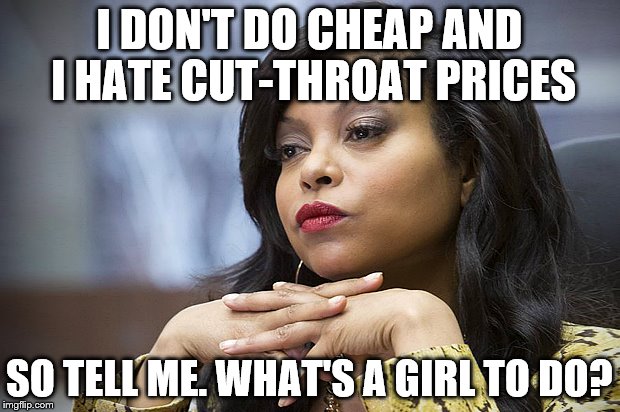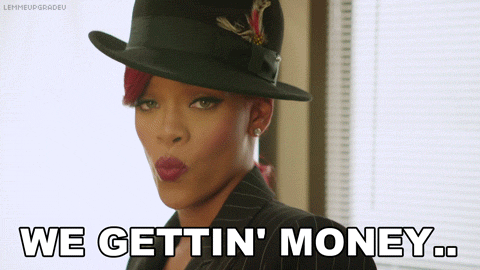You finally registered that business or online store, and already considering setting up packaging. Or maybe your website is up and running and you’re ready to pull out all stops to get your marketing underway. But there’s just one thing missing, how much should your products or services cost?
Pricing isn’t easy; there are several factors to consider. You don’t want to seem too expensive and therefore alienate your target market. But you also don’t want to price it so low that it connotes less quality or cheapness. So what’s a girl to do?

We all know that end at the end of the day, you’d want to cover your production costs and still make a profit. Because we all know those red bottoms won’t buy themselves.
However, pricing has to be based on the value transferred to customers for using your product or service. Consider the cost of production and make comparisons between your prices and that of competitors.
A general rule of thumb is to use the 10% rule by using the customer’s derived value and adding 10% to it. Got it? Good. Let’s explore some more.
Know your customers/clients
The better you understand your customers’ needs, the more accurate your pricing will be. Looking to your competitors for a pricing comparison should be based on the assumption that their pricing is ideal.
 Your competitors may be over or even under charging. So it’s still important to do a personal cost analysis and figure out the pricing that works best for you.
Your competitors may be over or even under charging. So it’s still important to do a personal cost analysis and figure out the pricing that works best for you.
Is your pricing above or below theirs? Does location, staff, size of the company, quantity, and quality of the products come into play? These are all worthwhile questions you should ask when looking to your for answers.
“Profit is not something to add on in the end, it’s something to plan for in the beginning” – Megan Auman
Price sensitivity
It is important to note that clients and customers will only pay more if they have the assurance of value. So don’t be scared to test out several different prices at the beginning.
It’s the same when you walk into a boutique, see a dress and instantly know it would be far cheaper at a regular clothing store. But because it’s an exotic brand, you believe it is of better quality and therefore, worth the high price.
 This is where price sensitivity comes into play. Price sensitivity is the degree to which the price of a dress in this analogy, affects the customers’ willingness to buy it. I like to call it the fine line between “too good to be true” and “dirt cheap” and therefore a bargain.
This is where price sensitivity comes into play. Price sensitivity is the degree to which the price of a dress in this analogy, affects the customers’ willingness to buy it. I like to call it the fine line between “too good to be true” and “dirt cheap” and therefore a bargain.
You do this by offering a different price, typically with a 5% difference, to individual customers for the same service or product. The general idea is that if you aren’t getting pushback from at least 20% of your customers, then you’re on the right track.
Also, it is important to note that there is less price sensitivity when the product is unique and hard to find. So make sure to distinguish yourself from competitors in a big way. The price would be worth it if the boutique is making just one dress per size. The exclusivity is almost like getting a custom-made dress.
“The reason it seems as though price is all your customers care about, is because you haven’t given them anything else to care about”- Seth Godin
Smaller versus bigger
Giving customers a choice between several tiers in pricing helps establish how well your products/services are priced. Have you ever come across the low, middle, and high price offerings? This is called ‘Goldilocks Pricing’. With this, you get to choose between the inexpensive but not ideal and the expensive but full package.
You then end up with the pricing that is just the right fit, like your very own Cinderella shoe. It typically has just enough features to get you started and is often the bestseller. More often than not, it’s a few steps away from that ‘premium’ package which you can upgrade to anytime.
 For instance, if you sell an 80-gram tub of shea butter for R60, then a 160-gram tub would cost 10% less than buying two 80-gram tubs. Chances are, the customer will go for the bigger tub which means more money for you, provided the production cost is not higher.
For instance, if you sell an 80-gram tub of shea butter for R60, then a 160-gram tub would cost 10% less than buying two 80-gram tubs. Chances are, the customer will go for the bigger tub which means more money for you, provided the production cost is not higher.
Similarly, a “buy 3 products and get the cheapest one free” sale in a specific high-end product range/ service market will ensure that you still get your money’s worth. Make sure that you always capitalise on these opportunities by offering any extra features that come with the package. For example, 10% to upgrade to the premium package from a 7-day free trial.
In summary, if your product or service is amazing, of standard quality and worth the price, customers will come flocking. Good luck!
